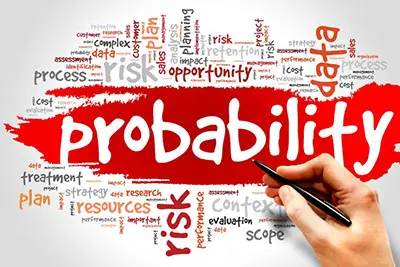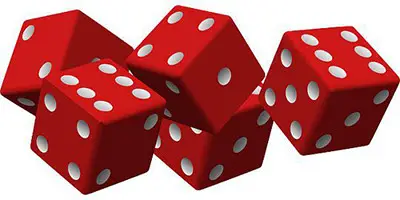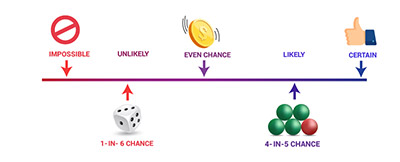The Monte Carlo Simulation
The Monte Carlo simulation, also known as the Monte Carlo Method or the Monte Carlo Sampling, is one of the many ways that you have at your disposal to determine the risk in quantitative analysis and in decision making.

The Monte Carlo simulation is a method that allows you to determine all the possible outcomes of your decisions while, at the same time, it assesses the impacts of the risk.
Discover the best probability calculators.
The Monte Carlo simulation uses intensive statistical sampling methods. Therefore and due to their complexity, they are, in most cases, only performed with the use of a computer.
The Monte Carlo simulation is complex because:
– The input model needs to be simulated hundreds or thousands of times and where each and every simulation needs to be equally likely.
– The Monte Carlo simulation doesn’t only transform numbers from a random number generator as it also takes these sequences and makes then repeat after a certain number of samples.
When you use the Monte Carlo simulation, you will be able to determine all the possible events that will or could happen as well as the probability of each possible outcome.
How Is The Monte Carlo Simulation Use In Real Life

Since the Monte Carlo simulation will deliver you a quantified probability, this means that it also delivers you scenarios with numbers that you can definitely use.
Let’s say that you are looking to build a factory close to the wetlands and that you want to discover if it will affect the local bird life. In this case, a quantified probability could be something like if you build a new factory, there are about 60% chance that the bird population is affected. As you can see, this is a lot more precise than to simply state that the bird population will be affected. And this is what you get from the Monte Carlo simulation.
Discover everything you need to know about the Probability Theory.
Here are the different areas and industries where you can successfully use the Monte Carlo simulation:
– Estimating the transmission of particles through matter
– Assessing risk for credit or insurance
– Analyzing radiative heat transfer problems

– Simulating proteins in biology
– Foreseeing where prices of securities are likely to move
– Calculating the probability of cost overruns in large projects
– Analyzing how a network or electric grid will perform in different scenarios.
Check out this ultimate guide to descriptive analysis.
The Monte Carlo Simulation Accuracy
When you are looking at probabilities, it is important that you use a method that is accurate. And this is exactly the case of The Monte Carlo Simulation. After all, there are many different factors that lead to ensure that The Monte Carlo Simulation is able to hit the exact mark. These include:
– Usually, there are several unknowns in the system
– It usually includes a lot of data
– Since we are determining a probability, there is always a margin of error related to the results that is accepted.
The truth is that there are times when The Monte Carlo Simulation can drive you into a bad result. This may occur when:

– the underlying risk factors aren’t complete
-you are using an unrealistic probability distribution or when you are using an incorrect model
– the random number generator that you chose for the method isn’t good enough
– using the Monte Carlo simulation isn’t suited to your data
– there are computer bugs.